When it comes to sustainability and clean energy, what makes sense for one organization may not work for another. In fact, the path toward sustainability will vary for every business and is completely dependent on the organization’s goals, business model, and budget.
While a business’s energy usage makes up a significant part of its environmental footprint — and will likely be a key factor in any ESG (Environment, Social, and Governmental) goals or sustainability planning — there are several options for reducing energy waste and impact.
Beyond the positive environmental impact, there are a few reasons to make the transition to clean energy, including economic and risk-mitigation benefits, as well as an opportunity to meet your customers’ sustainability expectations. As fossil fuel prices rise, the cost of sustainable energy sources, notably solar, have dropped significantly. In the last decade, solar and wind costs have steadily dropped, with commercial rooftop photovoltaic (PV) costs dropping by nearly 70 percent, according to the National Renewable Energy Laboratory.
Ultimately, the best approach is one that involves long-term planning, efficiency efforts, and sustainable energy technologies.
DETERMINING IF ON-SITE GENERATION IS RIGHT FOR YOUR BUSINESS
On-site power generation, like solar, can cover a large portion of an organization’s energy needs while also providing greater reliability. Let’s take a look at the benefits:
1. By generating power on-site, businesses can benefit from selling their surplus energy back to the grid.
2. When you own your generation resources, in addition to being connected to the grid, you may have a lower chance of experiencing an outage. Pairing your on-site wind or solar generation with a battery makes your system more resilient.
3. Most notably, on-site generation could protect your business from a volatile energy market. On-site solar is the only energy source that allows customers to “lock in” their energy costs for up to 30 years. All other sources have varying costs that can typically be secured for up to 5 years.
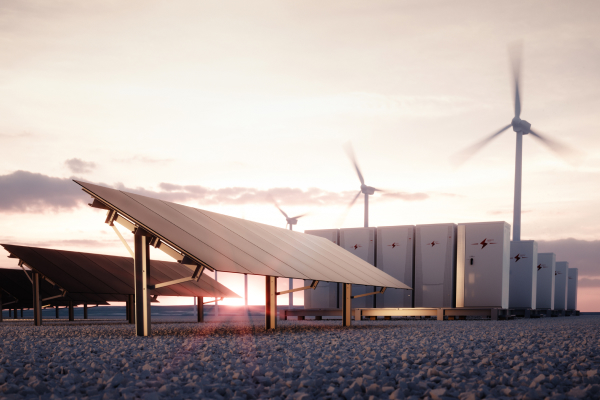
First, align on the goals. If the primary goal is cost savings, on-site solar might not be a business's first choice, as it’s possible that a business's high demand charges can’t be offset through solar. It's important to note that about half of your energy bill is driven by your energy demand, a measurement of your largest interval of power used during the billing period. The utility's demand charge won't go away even if a company is generating power on-site. In some cases, offsetting the energy portion of the bill alone can create savings — especially where there are state incentives or high energy rates. Adding battery storage might also be an option for reducing demand charges.
There are several critical questions to ask before moving forward with on-site solar. Organizations interested in exploring the viability of solar should be prepared to discuss with their energy partner:
1. Building ownership
2. Site suitability
3. Solar equipment ownership and management/maintenance
4. Overall energy goals

Focusing here helps a business determine if an investment in solar makes sense. Factors like site suitability are straightforward: Is the roof relatively large — and new? Is there another space available on the property, like a large field or parking lot? The conversation around owning or leasing equipment is more nuanced, involving tax incentives — and whether the business can benefit from them. This typically requires a review of a business's taxable income, the appetite for capital expense, and whether they want to maintain a long-term power generation asset.
Businesses considering on-site generation need to invest a fair amount of time in an analysis of their return on investment (ROI). And when working with a third-party solar partner, it’s important to get aligned on what savings they’ll see.
Ultimately, businesses with any sort of sustainability goal should be working with an energy partner that can help them focus on the key objectives and draft an energy plan that helps achieve those goals, whether carbon reduction or cost savings.


THE ROLE OF RECs AND CARBON OFFSETS
Beyond solar, sustainable energy options include green electricity and carbon-neutral natural gas, which are generated using renewable energy credits (RECs) and carbon offsets, respectively. Making the transition to green electricity and carbon-neutral natural gas is as simple as working with a trusted energy provider who has experience with RECs and offsets.
In addition to investments in on-site renewable generation, RECs can be bought and sold like other commodities and represent a fixed quantity of energy generated from renewable sources. If your business is unable to generate 100 percent of your local energy from renewable sources like on-site solar, your supplier can purchase RECs on your behalf to certify you’re paying for the generation of a certain amount of renewable energy.
If your business is reporting carbon emissions, switching to a cleaner energy source may be a necessary financial decision, as well as one that could earn the support of sustainability-minded consumers. And, depending on where your business is located in the U.S., there may be financial incentives for greening up your energy consumption.
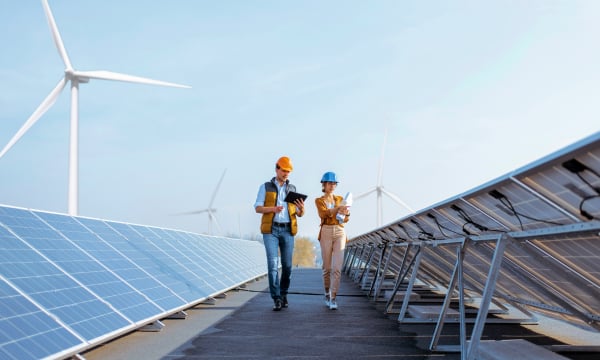
KEY QUESTIONS TO ASK YOUR ENERGY PARTNER
With energy technologies evolving and options increasing, making the transition to sustainable energy may seem daunting. The good news: Working with an experienced energy supplier can take the burden off your team.
The first step is to take your questions to your supplier. These should include:
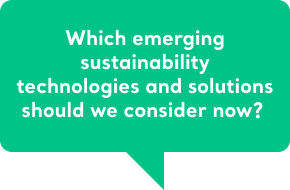
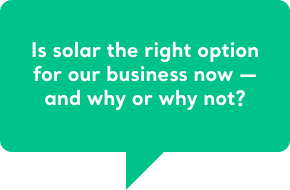
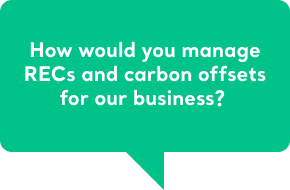
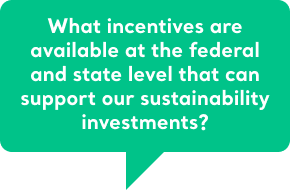
THE ELECTRICITY STORAGE CHALLENGE
Unlike other forms of energy, electricity must be generated and consumed at the same time.
Greater reliance on renewable energy has increased our need for storage solutions that can keep the grid stable. This means balancing supply and consumption — even when it’s not sunny or breezy enough for solar and wind power to meet demand. And while the cost of lithium-ion batteries has fallen dramatically — about 80 percent over the last 5 years — innovative solutions are increasingly being developed, tested, and put into operation.
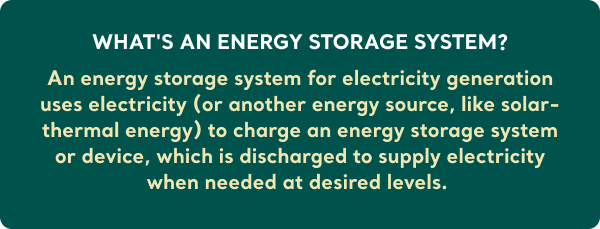
While storage capacity was markedly low as recently as 2020, growth in battery storage capacity is outpacing even the early growth of the U.S.’ utility-scale solar capacity. Domestic developers and power plant owners plan to increase utility-scale storage capacity over the next 3 years, reaching 30 gigawatts (GW) by 2025, up from 1.5 GW in 2020. For comparison, U.S. solar capacity grew from 1 GW in 2010 to 13.7 GW in 2015.
As more battery capacity becomes available to the U.S. grid, battery storage projects are becoming increasingly larger in capacity. Before 2020, the largest U.S. battery storage project was 40 megawatts (MW). Today, the 409 MW Manatee Energy Storage project in Florida is the largest operating battery project in the country, and developers have more than 23 large-scale projects scheduled for completion by 2025.
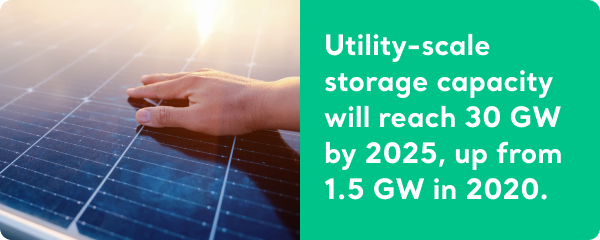
IN THIS REPORT, WE HIGHLIGHT THE KEY TRENDS AND TOPICS MOST AFFECTING THE ENERGY INDUSTRY — AND CONSUMERS.
Dive into the next section below.




